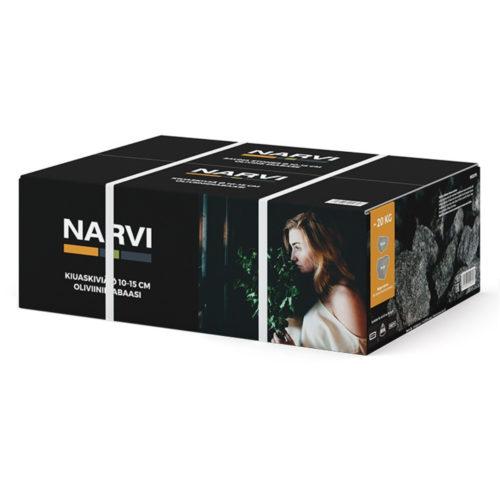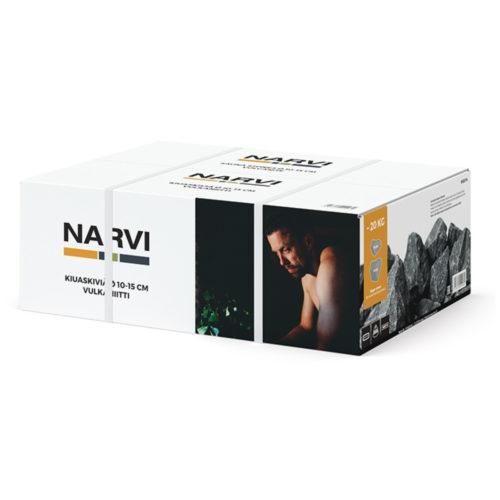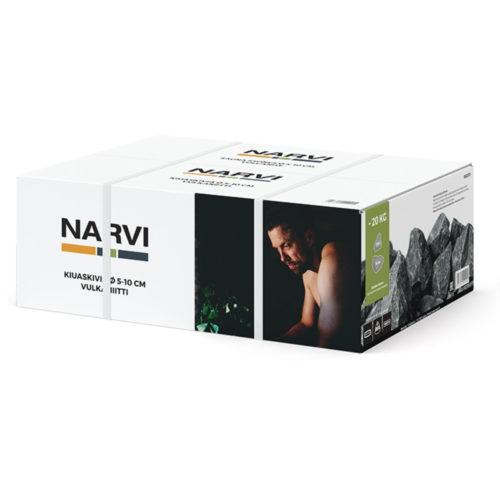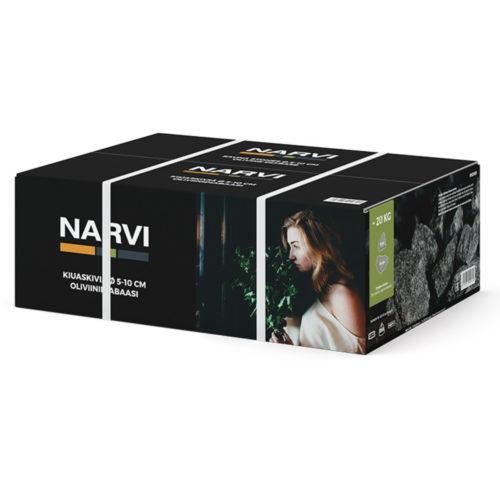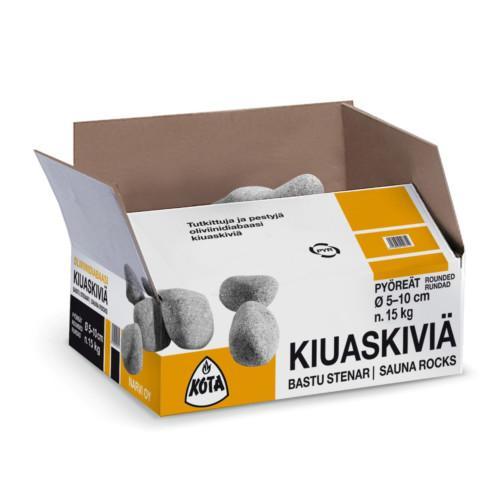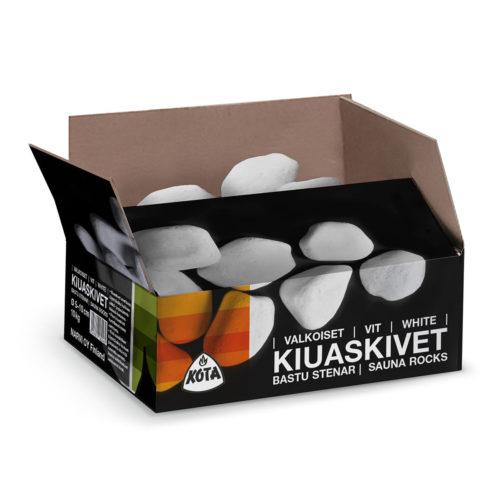Sauna stones
Sauna stones (or rocks) are one of the most important elements of a sauna experience. Hot rocks are the ones that increase the room temperature, and they create the pleasant “löyly” when water is being poured on them. The goal is to heat up and keep as many rocks as possible hot, instead of heating up metal and other materials. Stones bring the “good” heat to a sauna room, while hot metal brings radiation heat. Lots of info can be read from here, including a comparison of different stone types (in Finnish only).
There are many different stones available. We only recommend proper stones to be used on any sauna heater or stove. Commercially, that means that the package must say that the stones are for sauna purpose. It is important that they are durable enough and will not break too early. Rocks should be replaced about once a year in case sauna is being used weekly. An easy way to test if the rocks are in good shape is to pick two and knock them on each other. If they crack, it is time to change them. They shall also be washed, as dust is otherwise in unnecessary contact with the heater.
For electrical sauna heaters we recommend smaller stones (Ø 5–10 cm) and for wood-burning sauna stoves we recommend bigger stones (Ø 10–15 cm). The stone type can be either olivine diabase (the most common stone type) or vulcanite, which has a bit darker tone.
Ceramic stones we recommend only for Aitokiuas stoves, where the fire is in direct contact with the stones. Rounded and white stones are for decorative purpose only, and the top layer can be of those types. Under them, standard stones shall be used (in contact with heating elements or fireplace).
